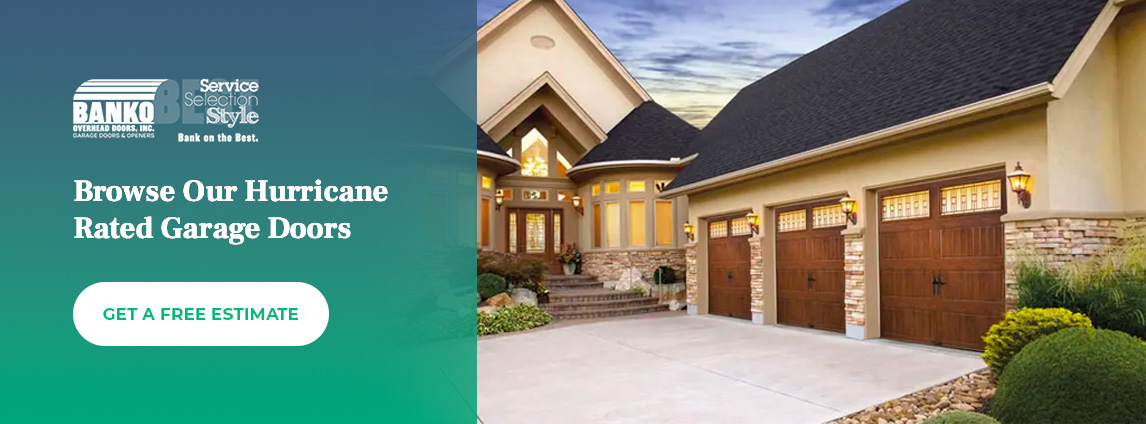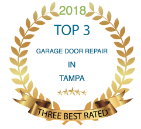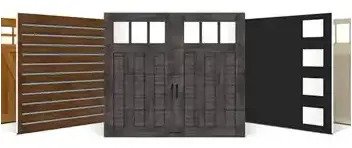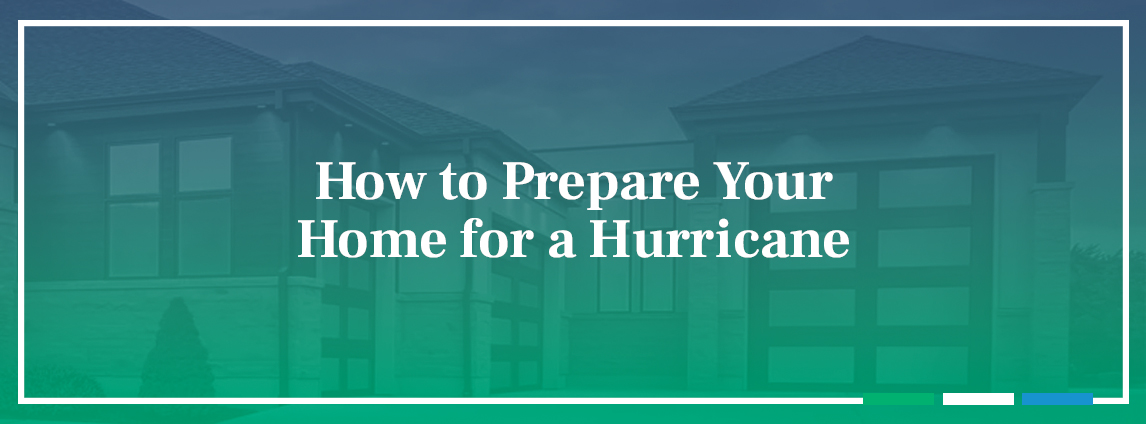
Residents in Florida and the surrounding coastal areas anticipate a roughly five-month-long hurricane season yearly. And as the accumulated cost of property damage caused by natural disasters in the United States crosses $2 trillion, preparing for hurricane season is more important than ever.
The National Oceanic and Atmospheric Administration (NOAA) is constantly researching ways to effectively forecast hurricane activity to help the Atlantic better prepare. While you can keep up with hurricane predictions for the year, being a homeowner in an area that is exposed to hurricanes is enough to keep you up at night when the season arrives.
Read on to learn measures to put in place to protect and prepare your home for a hurricane.
Table of Contents
- How Do You Prepare Your Home for a Hurricane?
- How Do You Prepare Your Garage for a Hurricane?
- How Do You Prepare Your Garage Door for a Hurricane?
- Why You Should Invest in a Hurricane Rated Garage Door
- Browse Our Hurricane Rated Garage Doors
How Do You Prepare Your Home for a Hurricane?

First, you’ll also want to check which category the hurricane falls into to gauge the severity of the expected storm. Then you can start preparations. The Centers for Disease Control and Prevention (CDC) recommends the following steps for preparing your home for hurricanes:
- Clean up the yard: Move large items like bicycles, trash cans and grills that could blow around and cause damage. You’ll also want to clear debris from your rain gutters and downspouts and ensure they are securely fastened to the house. Also, remove loose tree limbs and shrubbery.
- Cover the windows and doors: Protect your windows and doors using storm shutters or pieces of plywood.
- Switch off power if necessary: If you notice flooding or downed power lines — or you have to evacuate — turn off your power.
- Get water: Fill water bottles or other clean containers with drinking water in case you lose your water supply.
- Check your carbon monoxide (CO) detector: Prevent CO poisoning and check your detector’s batteries.
- Purchase backup generators: Generators are helpful when you return to your home and are in need of a portable, temporary power supply. You can use it to charge your cell phone to then reach out to emergency services and loved ones. However, their use should be limited since they could pose a safety risk if used incorrectly.
You’ll also want to consult your home insurance policy in the wake of a hurricane to see what is and is not covered.
One of the significant parts of your home that you’ll want to protect is your garage door. Keep reading to learn more, and request a free estimate on WindRated and hurricane rated garage doors to prepare your home for hurricane season.
How Do You Prepare Your Garage for a Hurricane?
Preparing your home for hurricane season includes getting your garage in order. The numerous items in your garage could become dangerous hazards during a storm. Here are a few steps you can take to clean out your garage:
Organize and Declutter
Prepare for a hurricane at home by organizing your garage:
- Sift through the items you’ve stored in your garage, and decide what is essential for you to keep.
- Consider moving loose items from your garage to your basement.
- Pack miscellaneous items in sturdy boxes and important belongings in waterproof packaging.
- Remove anything that could be harmful, including flammable materials like gasoline, from your garage.
- Sweep the floor once everything in your garage is organized.
Check for Exposed Electrical Wiring
The next step on your checklist should involve checking for exposed electrical wiring:
- Once you are confident your garage is well-organized, check for loose electrical wiring.
- Unplug electrical sources immediately.
- If you notice wiring that has become exposed or worn, contact an electrician to sort out all your wiring instead of attempting to handle it yourself.
Waterproof and Secure Larger Items
As you prepare your home for a hurricane, waterproof and secure the larger items in your garage:
- Wrap larger items like furniture in bubble wrap or plastic.
- Tie down anything heavy, like a washing machine or refrigerator.
Hurricane rated garage doors can help protect your garage during a hurricane. Request an estimate for a hurricane rated garage door today.
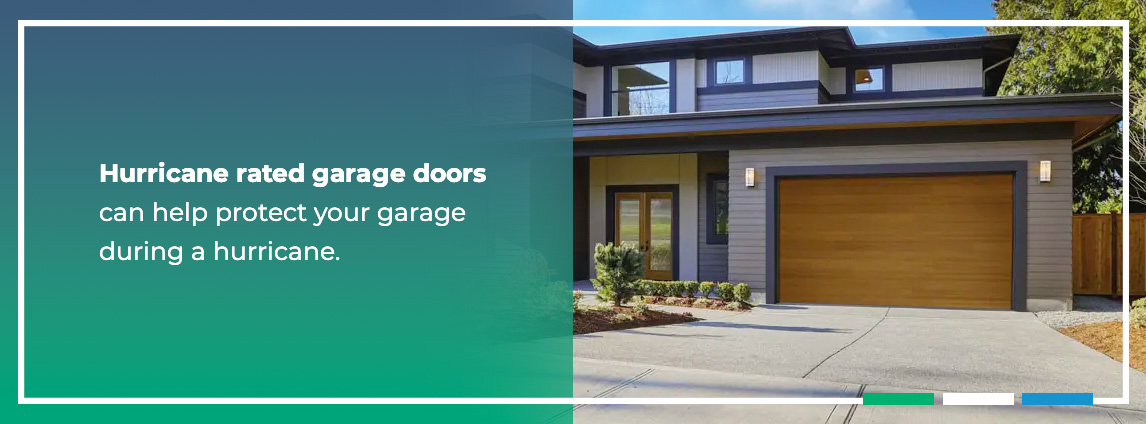
How Do You Prepare Your Garage Door for a Hurricane?
Your garage door protects your garage’s structural integrity. Part of preparing your home for a hurricane is ensuring the garage door is ready. Here are a few tips on inspecting and safeguarding your garage door:
- Inspect the overall condition: Check that your garage door is in good working condition and free of rust and other damage. If there are any signs of significant deterioration, contact a reputable garage door company to repair or replace it.
- Seal visible gaps: Prevent water and wind from seeping through small gaps and cracks around the edges of your garage by closing them up with weatherproof sealant.
- Tighten screws and bolts: The tracks must be fully secure to keep the door in place. Ensure all screws and bolts that secure the tracks and other parts of the door are tightened since loose components could result in the door being pulled off by strong winds.
- Reinforce the door: If possible, install a bracing system to support the door panels in an effort to reinforce it. This will help prevent excessive damage caused by the force of the wind and any flying debris.
- Secure the windows: Garage doors with windows should be secured with impact-resistant film to limit the damage that flying objects may cause. You can also use plywood to cover large openings, like skylights or windows, or put on hurricane shutters if you have them. If you don’t, consider ordering them before the next major storm.
To add garage door protection, install a hurricane rated garage door to your property.
Why You Should Invest in a Hurricane Rated Garage Door
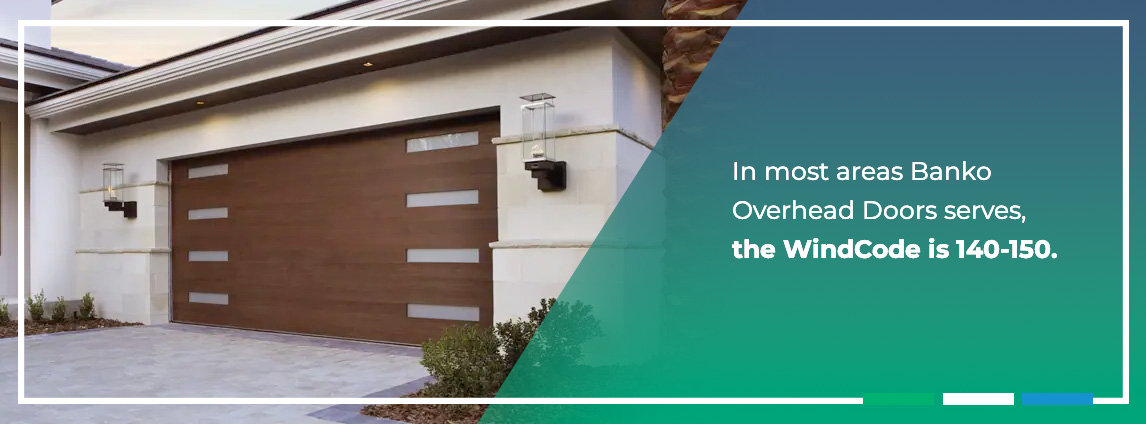
Standard garage doors offer year-round protection, but hurricane rated garage doors take things up a notch. Based on government recommendations, hurricane-proof garage doors should be able to withstand a certain amount of wind and force, known as the WindCode. This code is determined by the greatest wind amounts that are typically experienced during a hurricane or tropical storm.
In most areas Banko Overhead Doors serves, the WindCode is 140-150. Our hurricane-proof garage doors meet the highest quality and durability standards. The doors are tested for strength against both wind and air-born debris. Here’s why you should invest in a hurricane rated door:
- Ultimate protection against high winds: Since they are reinforced to withstand winds that can reach speeds of up to 150 miles per hour, hurricane rated garage doors are designed to offer the ultimate protection.
- Extreme impact-resistance: These durable doors are made to endure the force and impact of debris like household items and tree branches.
- Reduced water penetration: They offer more seal protection than average garage doors, ensuring water doesn’t seep through during or after a storm.
- Better insurance premiums: Many insurance companies incentivize homeowners to install hurricane-proof doors by reducing or offering discounted rates on their insurance premiums.
- Improved security: The tough materials used to manufacture hurricane rated garage doors protect against intruders and hurricanes. For example, this is helpful in case you return from an evacuation after a hurricane.
Browse Our Hurricane Rated Garage Doors
Providing Florida’s Gulf Coast with garage door needs since 1984, Banko is a trusted member of the local community. Our professional and knowledgeable staff can install your new garage door quickly and efficiently.
We stand behind our products, and we’ll help protect your investment with service plans and warranties. We also take care of permits and tax implications, so you only need to choose the door you want. Banko will handle the rest!
Contact Banko Overhead Doors for a free estimate or consultation on hurricane rated garage doors in Florida.
Additional Resources on Garage Door Insulation and Strength:
- Garage Door R-Value
- Why You Should Have an Insulated Garage
- How to Know if Your Garage Door is Hurricane-Proof

